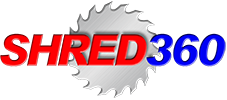Watch Out For Skimmers At The ATM
Be careful when using your debit or credit card at an ATM or a gas pump. These machines are increasingly being fitted with so-called skimmers—devices that thieves install to steal your card information. A recent victim of debit/ATM card theft myself, this information comes along at a very opportune time.
The problem has been getting worse. In April, the FICO Card Alert Service, which detects credit card fraud early, reported that in 2015, the use of skimmers in ATMs was the highest ever recorded, up 546 percent from one year earlier. A 2016 report by Verizon Enterprises found that ATMs are a particular problem, accounting for 94 percent of security breaches, compared to gas pumps, which represent just 5 percent.
“We are in an arms race, unfortunately, with the bad guys,” says Owen Wild, director of marketing for security solutions at NCR Corporation, which makes payment card equipment and software. He says skimmer fraud has increased by triple digits over just the last 18 months.
Thieves don’t rely solely on using a skimmer. They are usually deployed along with other devices such as a tiny camera that records the PIN you type in on the ATM keyboard. A thief may also place a PIN pad “overlay” that fits on top of the original PIN pad and records the code you type in to the ATM to access your account.
Last month, NCR issued a security alert warning about the use of so-called deep-insert skimmers. This kind of skimmer is placed inside the ATM, behind the shutter of a motorized card reader. It is completely hidden from the consumer. Thieves can either return to the ATM to get the device that has recorded your personal data or, if the skimmer is more sophisticated, it can transmit the data wirelessly to the thief. Thieves then use the information to create duplicate cards and make cash withdrawals or purchases.
“This problem will not go away until the magnetic stripe on the back of the card is eliminated,” says NCR’s Wild. He says that the U.S. has been especially vulnerable to skimmers because it has been slow to adopt payment card chip technology. Even now that chip cards are available, they still come with magnetic stripes that store cardholder information.
How to Protect Yourself
Since you can’t always detect a skimmer, take these steps to reduce the risk that your data will be stolen:
Avoid remote ATMs and point-of-sale terminals. ATMs that are in low-trafficked, poorly lit areas are vulnerable to being tampered with by thieves. So are gas pumps that accept credit cards located at stations far from major highways. The safest ATMs, says Wild, are the vestibule and drive-up machines located at your bank. But skimmers have been found even in some of those, he says.
Don’t insert your cards into the readers. One option at gas stations is to pay the attendant directly. But don’t let the attendant move your card out of view, advise Tennessee consumer officials. Some unscrupulous workers have been found carrying portable skimmers to steal debit and credit card information. You can avoid the problem completely by using cash for purchases and by withdrawing money from a bank teller instead of by using an ATM.
Look for signs of tampering. Before using an ATM or payment device, try wiggling the keypad or card slot, advises the police department in Portland, Oregon. If anything seems loose, don’t use the device. Look for keypads that appear raised or have an unusual color, says the New York City Department of Consumer Affairs. Some gas pumps have security seal tape, which, if broken, indicates possible tampering. If you suspect signs of tampering, report it to the bank or retailer.
Protect your PIN. Use your hand to cover the keypad when entering a PIN in case thieves have installed a pinhole camera to record the number you enter, recommends the Better Business Bureau. While entering your PIN, Wild says it’s a good idea to place your fingers on other numbers without actually pressing them to confuse a thief who is looking at a recording. None of this, however, will protect you if a fake keypad has been placed over the original one.
Use a chip card. Credit and debit cards with chips offer better protection, says Wild. But that’s only the case if you insert the chip portion of your card into the reader. If your card must be completely inserted into the card reader, a skimmer will be able to steal the card information from the card’s magnetic stripe.
Avoid using a debit card. When making a purchase, opt for a credit card, which may provide better fraud protection than a debit card. With a debit card, there’s a risk that thieves could drain your bank account.
Check your transactions. Carefully examine your bank account and credit card activity online. Also check your statements for unusual transactions, says FICO.
Report a theft. Tell your bank or credit card issuer immediately if you find any unauthorized purchases or withdrawals. The law limits the time you have to report unauthorized transactions before your liability begins to increase.
Special thanks to our friends at Consumer Reports for this great information…


